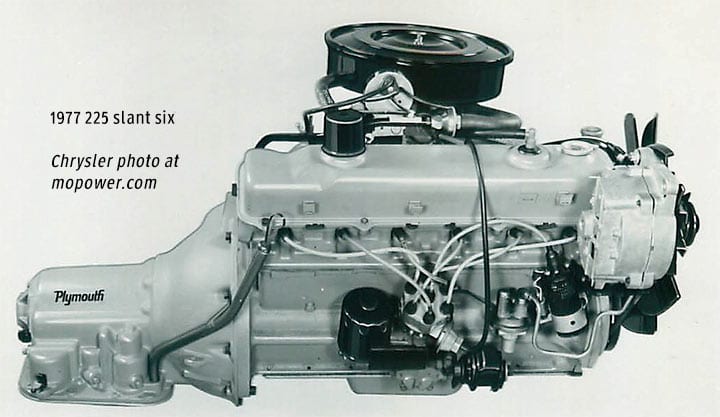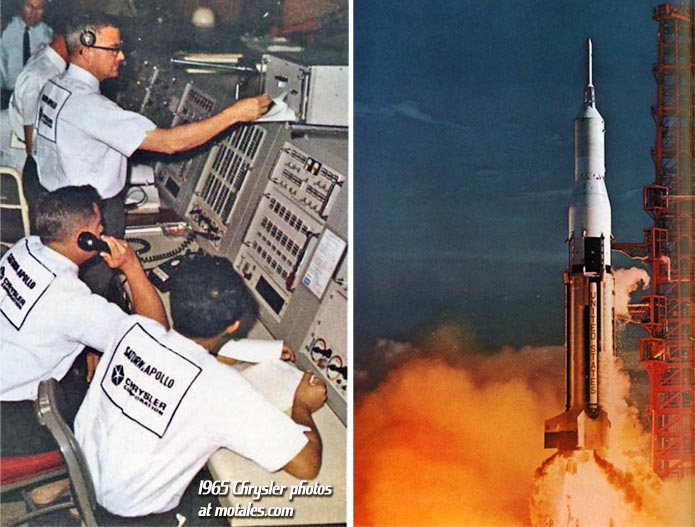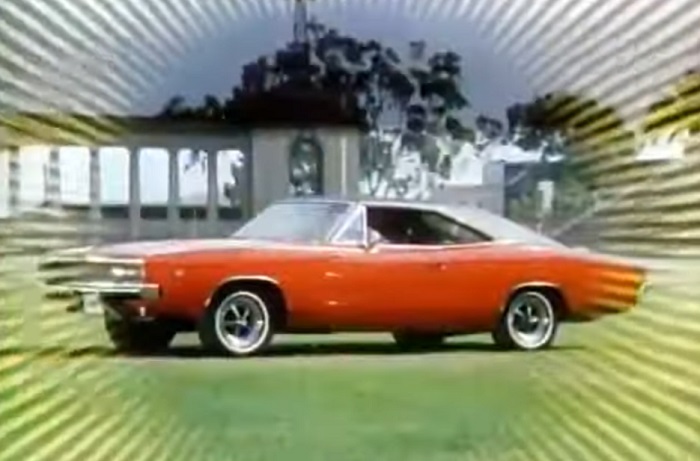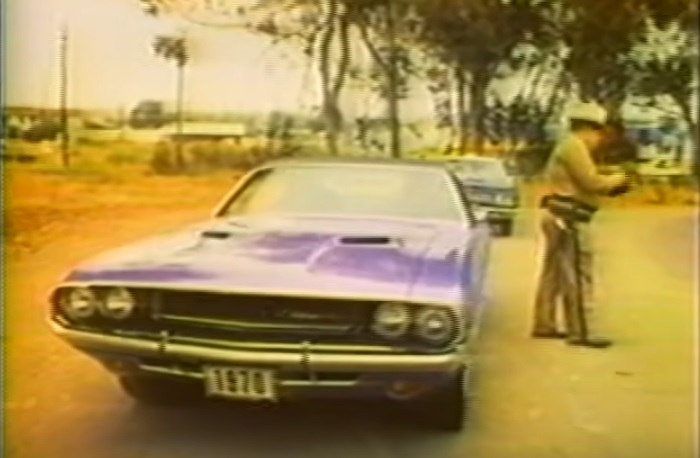Chrysler’s role in creating the Moon rockets has long been ignored; it’s not even mentioned on multiple Wikipedia pages which ignore the prime contractor but mention Rockwell and Boeing. Yet Chrysler did not just have a hand in creating the Saturn V vehicles used in the Apollo missions; they were the prime contractor for these and for the Redstone missiles which came before.
Chrysler started working with the combined Army-Air Force rocketry program from its earliest days, running the Warren, Michigan factory which produced the Redstone missiles. While the rocket engines and fuselages were produced by other companies, Chrysler coordinated them, put them together, designed and produced some of the electronic control and ground systems, and provided part of the ground support crews. The photo above, from the 1965 Chrysler Annual Report, clearly shows ground crew members wearing Chrysler shirts.
Motales recently recovered the story of Chrysler’s role in rocketry, including their work in developing digital telemetry for the Apollo missions. From the Redstones to the final launch (of Skylab), Chrysler was America’s chosen leader in aerospace. The company only left the business when NASA rejected its space shuttle design. (See https://www.motales.com/chrysler-corp/aerospace-defense/rockets-by-chrysler.php for more)












